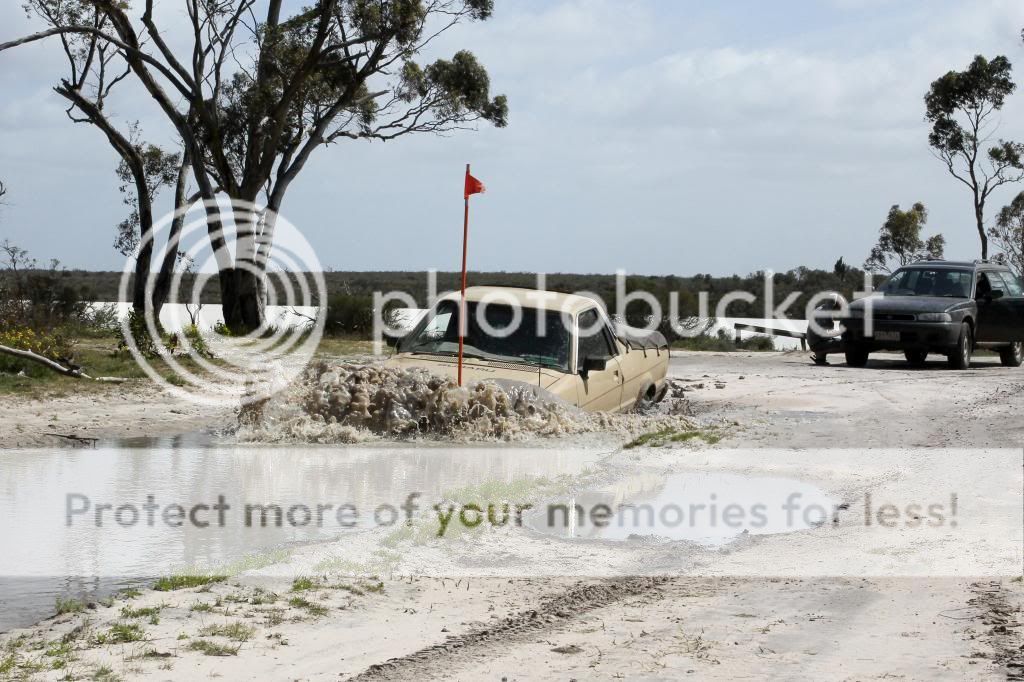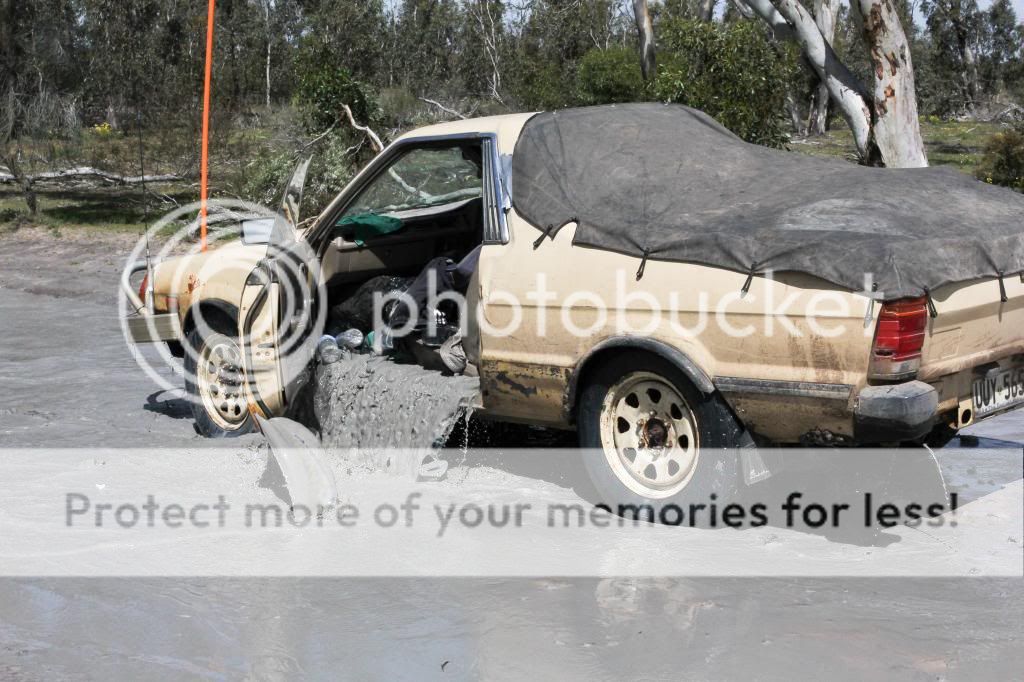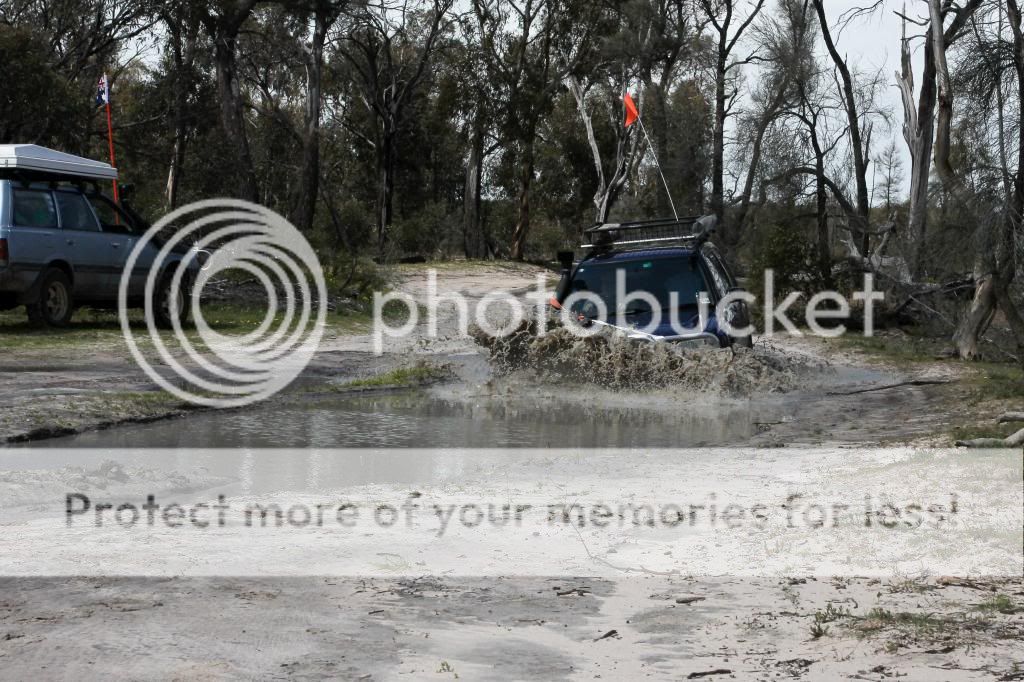You are using an out of date browser. It may not display this or other websites correctly.
You should upgrade or use an alternative browser.
You should upgrade or use an alternative browser.
TR: *Pics warning!* Wyperfeld/Big Desert/Little Desert
- Thread starter El_Freddo
- Start date
carljwnc
Emeritus Forum Staff
- Joined
- Jul 10, 2008
- Messages
- 3,103
- Location
- Fairview, North Carolina USA
- Car Year
- 2016
- Car Model
- Forester Touring
- Transmission
- CVT
Fan-freakin'-tastic trip report!!!
Saw it earlier in the week, but had to 'save' it for the weekend when I could spend the time to properly appreciate it. Glad I did well worth it to spend some extra time going through it.
Gotta' ask; what is the deal with the Mallee root???
Saw it earlier in the week, but had to 'save' it for the weekend when I could spend the time to properly appreciate it. Glad I did well worth it to spend some extra time going through it.
Gotta' ask; what is the deal with the Mallee root???
Scooby2
Forum Member
- Joined
- Sep 9, 2012
- Messages
- 623
- Location
- Gooloogong, Australia
- Car Year
- 2004
- Car Model
- Landcruiser
- Transmission
- Auto
Very slow burning and hot carljwnc.....
https://www.pineplainslodge.com/100281.php
Just what we should have had on our rainy trip down south!
https://www.pineplainslodge.com/100281.php
Just what we should have had on our rainy trip down south!
Tannin
Senior Member
- Joined
- Dec 17, 2008
- Messages
- 209
- Location
- Huon Valley Tasmania
- Car Year
- 2007
- Car Model
- Forester
- Transmission
- Manual
Adding to Scoby2's answer, Carl, "mallee" is the term for any of many different euclayptus trees which have adapted to harsh desert or near-desert conditions by shrinking (most are between perhaps 2 metres and 6 metres tall, typically around 3-4); developing a giant lignotuber (swollen root, bit like a carrot or a turnip); having many small trunks instead of one big one; and adapting to or even encouraging fire.
The huge root stores a lot of energy; when a fire comes along, the tops burn off and the landscape looks as though everything has been killed. All the other vegetation regenerates from seed, but the mallees simply grow new tops, using the energy stored in that gigantic root system. This allows them to regenerate faster and out-compete normal plants in the race to reestablish.

^ Spinifex mallee: Hattah, NW Victoria.
Many mallee species also have developed bark that peels in long ribbons: this burns readily and blows around in any wind, helping to spread a fire. Mallees, in other words, are a bit like the Tea Party - they reckon that if you destroy everything, they'll be the only ones with the resources on hand to recover first and take over the wreckage. And, over vast areas of this huge country, that's exactly what they have done. At a wild, wild guess, 10% of the continent is covered in mallee. (Mulga - an alternative strategey practiced by various desert-loving Acacia species - is even more successful, but mulga is a topic for another day.)

^ Malle bark, Wongan Hills, SW WA.
By the way, "Mallee" (with a capital "M") is also the name of a district in Victoria - the large north-western part of the state (presumably named after the vegetation). Over the border in South Australia, the equivalent district is the Murray Mallee. (South Australians pay a lot of attention to the Murray 'coz it's the river they've got worth mentioning, unless you count the Cooper.)
The huge root stores a lot of energy; when a fire comes along, the tops burn off and the landscape looks as though everything has been killed. All the other vegetation regenerates from seed, but the mallees simply grow new tops, using the energy stored in that gigantic root system. This allows them to regenerate faster and out-compete normal plants in the race to reestablish.

^ Spinifex mallee: Hattah, NW Victoria.
Many mallee species also have developed bark that peels in long ribbons: this burns readily and blows around in any wind, helping to spread a fire. Mallees, in other words, are a bit like the Tea Party - they reckon that if you destroy everything, they'll be the only ones with the resources on hand to recover first and take over the wreckage. And, over vast areas of this huge country, that's exactly what they have done. At a wild, wild guess, 10% of the continent is covered in mallee. (Mulga - an alternative strategey practiced by various desert-loving Acacia species - is even more successful, but mulga is a topic for another day.)

^ Malle bark, Wongan Hills, SW WA.
By the way, "Mallee" (with a capital "M") is also the name of a district in Victoria - the large north-western part of the state (presumably named after the vegetation). Over the border in South Australia, the equivalent district is the Murray Mallee. (South Australians pay a lot of attention to the Murray 'coz it's the river they've got worth mentioning, unless you count the Cooper.)
NachaLuva
Product Developer
Nice post Tannin :iconwink:
Lol
Unfortunately by the time the mighty Murray arrives in SA most of the water has been sucked out by irrigation in agriculture...a cancer on our land!


For the first time in many, many years the Murray (PS: said "the Murray" as opposed to "Murray River", a funny lil Aussie idiosyncrasy lol) actually flowed out to the sea, rejuvenating The Coorong, an amazing area of great biodiversity & aboriginal significance, plus great economic value for tourism & commercial fishing as it feeds the ecology in the ocean. Unfortunately this almost completely died due to many years of zero flow, stagnation compounded by increased salinity caused by evaporation. As with many ecosystems, it bounces back given an opprtunity, which it now has :biggrin:
The beach along The Coorong would be an excellent drive all the way to mouth of the Murray, mentioned in the possible Robe trip above :iconwink:
Thread hijack over :biggrin:
South Australians pay a lot of attention to the Murray 'coz it's the river they've got worth mentioning, unless you count the Cooper
Lol

Unfortunately by the time the mighty Murray arrives in SA most of the water has been sucked out by irrigation in agriculture...a cancer on our land!


For the first time in many, many years the Murray (PS: said "the Murray" as opposed to "Murray River", a funny lil Aussie idiosyncrasy lol) actually flowed out to the sea, rejuvenating The Coorong, an amazing area of great biodiversity & aboriginal significance, plus great economic value for tourism & commercial fishing as it feeds the ecology in the ocean. Unfortunately this almost completely died due to many years of zero flow, stagnation compounded by increased salinity caused by evaporation. As with many ecosystems, it bounces back given an opprtunity, which it now has :biggrin:
The beach along The Coorong would be an excellent drive all the way to mouth of the Murray, mentioned in the possible Robe trip above :iconwink:
Thread hijack over :biggrin:
Dedman
Forum Member
- Joined
- Dec 3, 2012
- Messages
- 766
- Location
- Perth Western Australia
- Car Year
- 1999
- Car Model
- Forester
- Transmission
- 5MT
Awesome trip report!! Super sad I couldnt make it though. Cant wait to have a go at some sand. Hopefully I will find some in Tassie over summer :ebiggrin:
carljwnc
Emeritus Forum Staff
- Joined
- Jul 10, 2008
- Messages
- 3,103
- Location
- Fairview, North Carolina USA
- Car Year
- 2016
- Car Model
- Forester Touring
- Transmission
- CVT
Thank You!!! Very well explained.:ebiggrin:
Sounds good for some slow roasting.
Sounds good for some slow roasting.
Dedman
Forum Member
- Joined
- Dec 3, 2012
- Messages
- 766
- Location
- Perth Western Australia
- Car Year
- 1999
- Car Model
- Forester
- Transmission
- 5MT
Cool Pics!
Where did you all get the sand flags from? Or are they home made?
Where did you all get the sand flags from? Or are they home made?
Dulagarl
Forum Member
- Joined
- Aug 24, 2010
- Messages
- 975
- Location
- Canberra ACT
- Car Year
- 2000
- Car Model
- EZ30R Forester
- Transmission
- Dual range manual
Mallees, in other words, are a bit like the Tea Party - they reckon that if you destroy everything, they'll be the only ones with the resources on hand to recover first and take over the wreckage.
hahahaha
also, epic pics Richard.
Dedman, my sand flag is from my mobility scooter.
actually, I bought it at a cycling shop.
NachaLuva
Product Developer
Great pics...I hope the Brumby was able to be cleaned out. I know Dulagarl was thinking of ditching the carpet after this 
After the Brumby sucked in mud & the plugs were removed to pump it out, do you think there would be any probs with having that gunk inside the combustion chamber? Oil contamination, residue creating hotspots & carbon buildup, etc?
After the Brumby sucked in mud & the plugs were removed to pump it out, do you think there would be any probs with having that gunk inside the combustion chamber? Oil contamination, residue creating hotspots & carbon buildup, etc?
- Joined
- Aug 11, 2008
- Messages
- 2,399
- Location
- Bridgewater, Vic
- Car Year
- 1988, 1990
- Car Model
- EJ22'd L series; Targa Brumby
- Transmission
- Locking FT4wd 5spd Manual, 4.111:1 diff w 1.59:1 low range & front OBX LSD ;)
Cool Pics!
Where did you all get the sand flags from? Or are they home made?
Home made. This is number 3 for me - and it's a three piece
After the Brumby sucked in mud & the plugs were removed to pump it out, do you think there would be any probs with having that gunk inside the combustion chamber? Oil contamination, residue creating hotspots & carbon buildup, etc?
Nope. It was cleaned out straight away, the engine was still hot and it was run for a period of time after that so there wouldn't be any issues after this. That said, Bboypebs did have some running issues that he put down to being a bit of water in the bottom of the carbie's fuel bowl - with the bouncing around the water would be sucked into the engine and alter the combustion mixture enough to upset the engine performance (eg, none!).
Long lasting issues, not a worry. I've got an EA81 in the shed that I'm about to put back together that has been sitting full of water for 6 months. There was some surface rust on the bore that moved on well with some emery paper action, but one cylinder has a tiny rust pit at the top of the bore that I'm not stressed about. I expect this engine to run well once back together. Worst case scenario is the oil rings will be shot - time will tell on that one.
Subaruby, love that pic with the door of the brumby open with the water gushing out! It's a stand out among the others. Glad you could make it!
Thanks for all the positive comments to guys, always appreciated!
Cheers
Bennie
NachaLuva
Product Developer
Subaruby, love that pic with the door of the brumby open with the water gushing out! It's a stand out among the others. Glad you could make it!
yep thats a good one! I also like your one of the water coming out the tailpipe :biggrin:
Dedman
Forum Member
- Joined
- Dec 3, 2012
- Messages
- 766
- Location
- Perth Western Australia
- Car Year
- 1999
- Car Model
- Forester
- Transmission
- 5MT
Home made. This is number 3 for me - and it's a three pieceI've got one piece cable tied to the roo bar, then the second and third piece has a piece of wooden dowel screwed to the bottom end of them, these have a matching hole in them so they can be bolted into the matching piece/hole below. I hope that explains it!
Is the pole just electrical conduit? Smallest or second smallest size?
- Joined
- Aug 11, 2008
- Messages
- 2,399
- Location
- Bridgewater, Vic
- Car Year
- 1988, 1990
- Car Model
- EJ22'd L series; Targa Brumby
- Transmission
- Locking FT4wd 5spd Manual, 4.111:1 diff w 1.59:1 low range & front OBX LSD ;)
Is the pole just electrical conduit? Smallest or second smallest size?
Smallest I think - the one that can fit a broom handle sized piece of dowel in it. The dowel is what I used to hold the three pieces together with a permanent screw and a temporary bolt arrangement.
I should get pics for you

Cheers
Bennie
NachaLuva
Product Developer
I have an old fishing rod I was gonna test with a flag. Bonus is if we're cruising along a beach & see a school of salmon just rip the flag off & cast a lure out!  :rotfl:
:rotfl:
 :rotfl:
:rotfl:Dulagarl
Forum Member
- Joined
- Aug 24, 2010
- Messages
- 975
- Location
- Canberra ACT
- Car Year
- 2000
- Car Model
- EZ30R Forester
- Transmission
- Dual range manual
I think it might be some time before we're allowed in this area again.
Both Lake Albacutya and Wyperfeld parks remain closed: fires were extensive. It seems that all of Lake Albacutya park burned.
follow link below for some pics: there is a remarkable pic looking north to the Albacutya wheat silo, with fire in background.
https://wimmera-w-b-w.blogspot.com.au/2014/01/bushfires-north-south.html
Both Lake Albacutya and Wyperfeld parks remain closed: fires were extensive. It seems that all of Lake Albacutya park burned.
follow link below for some pics: there is a remarkable pic looking north to the Albacutya wheat silo, with fire in background.
https://wimmera-w-b-w.blogspot.com.au/2014/01/bushfires-north-south.html
NachaLuva
Product Developer
follow link below for some pics: there is a remarkable pic looking north to the Albacutya wheat silo, with fire in background.
https://wimmera-w-b-w.blogspot.com.au/2014/01/bushfires-north-south.html
That is a great photo :biggrin:





